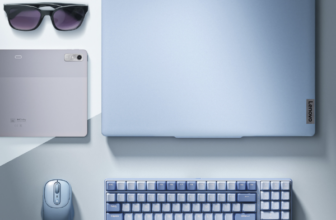In the competitive tablet market, domestic manufacturers have chosen different paths when it comes to processors. Xiaomi sticks with Qualcomm’s Snapdragon, while OPPO and Vivo lean towards MediaTek’s solutions. In this article, we explore the processors powering their latest tablets and what the future holds for Xiaomi vs. OV tablet processors.

Xiaomi: Qualcomm’s Snapdragon Platform Continues to Lead
Xiaomi, with its Tablet 6 series, continues its tradition of using Qualcomm’s Snapdragon platform. This year, the Xiaomi Tablet 6 is equipped with Snapdragon 870 and Snapdragon 8+ processors, ensuring strong performance for users. Xiaomi’s reliance on Qualcomm remains consistent, emphasizing power and reliability across their devices. This makes the Xiaomi vs. OV tablet processors comparison even more evident.

OPPO and Vivo: MediaTek’s Dimensity 9000 Takes the Lead
In contrast, OPPO and Vivo have adopted MediaTek’s Dimensity 9000 processor for their tablets this year. Known for its high performance and energy efficiency, the Dimensity series is a competitive alternative to Qualcomm’s Snapdragon. Both OPPO and Vivo have embraced this technology, signaling a shift towards MediaTek in their upcoming releases.
Processor Comparison: MediaTek Dimensity 9200 vs. Qualcomm Snapdragon 8 Gen 2
The Dimensity 9200 and Snapdragon 8 Gen 2 are two of the most powerful processors in today’s market. Here’s a closer look at their specifications:
-
MediaTek Dimensity 9200
- Cortex-X3 Super Core at 3.05GHz
- Cortex-A715 Cores at 2.85GHz
- Cortex-A510 Small Cores at 1.8GHz
- Mali-G715 GPU
- Geekbench 5: 1425 points (Single-core), 4475 points (Multi-core)
-
Qualcomm Snapdragon 8 Gen 2
- Cortex-X3 Super Core at 3.19GHz
- Cortex-A715 and A710 Cores at 2.80GHz
- Cortex-A510 Small Cores at 2.02GHz
- Adreno 740 GPU
- Geekbench 5: 1490 points (Single-core), 5250 points (Multi-core)
Both processors excel in multitasking, with the Snapdragon 8 Gen 2 slightly outperforming the Dimensity 9200 in both single-core and multi-core performance. However, both offer top-tier speeds and capabilities for high-end tablets.
What’s Next for Tablet Processors?
Looking forward, Xiaomi is expected to continue using Qualcomm’s flagship Snapdragon processors for its next generation of tablets. On the other hand, OPPO and Vivo will likely choose between the Dimensity 9200 and the second-generation Snapdragon 8. Both options offer impressive capabilities, and their decision will likely depend on factors like performance, power efficiency, and cost-effectiveness.
Conclusion: Diverging Strategies in the Tablet Market
As tablet manufacturers evolve, processor choice remains a key differentiator. Xiaomi’s consistent preference for Qualcomm’s Snapdragon processors contrasts with OPPO and Vivo’s shift towards MediaTek’s Dimensity series. The future will show how these choices impact the tablet market, but it’s clear that each brand is committed to delivering powerful devices to users.
For more tech updates and deals, visit Tinydeals.





